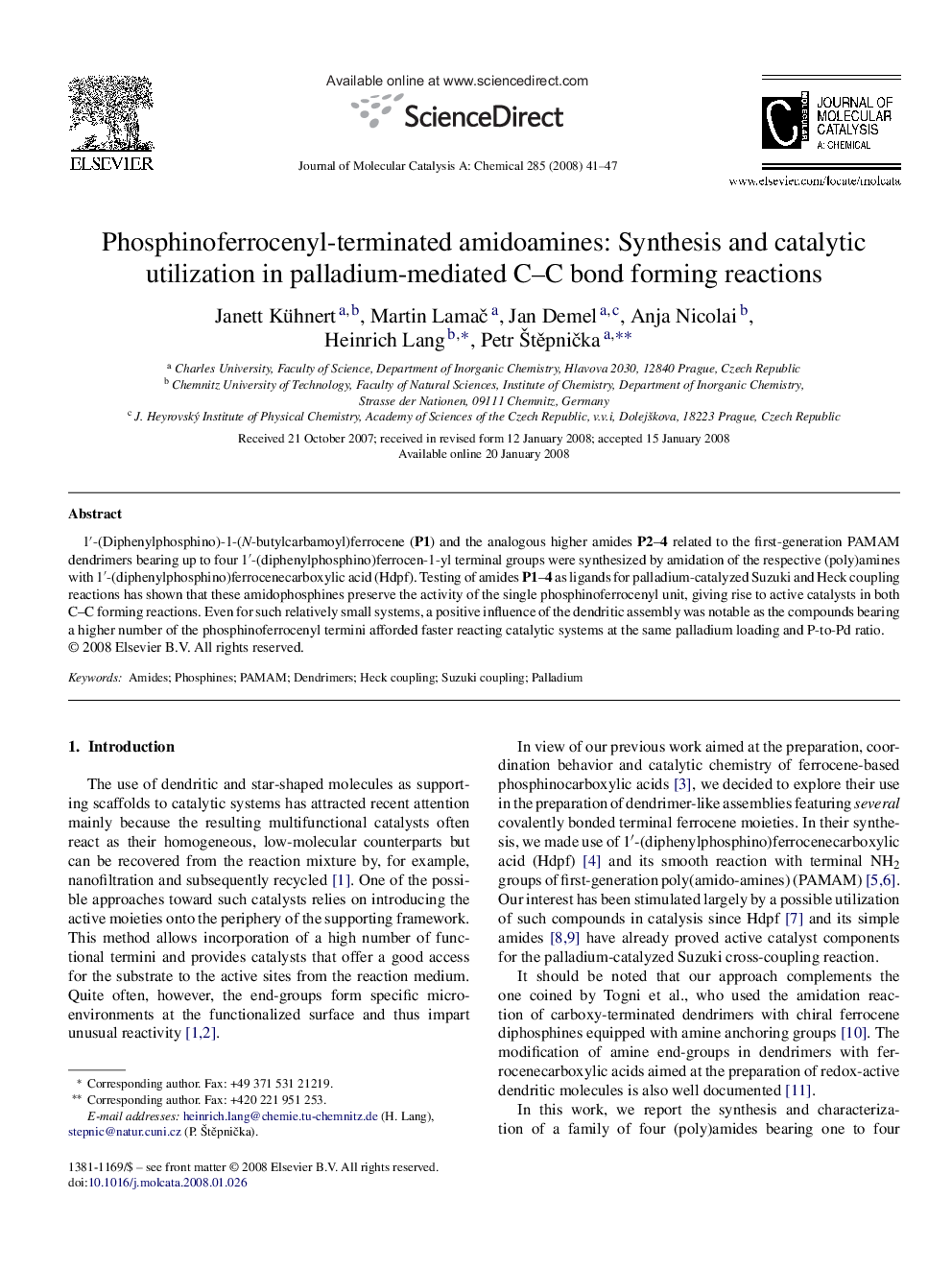| کد مقاله | کد نشریه | سال انتشار | مقاله انگلیسی | نسخه تمام متن |
|---|---|---|---|---|
| 68299 | 48511 | 2008 | 7 صفحه PDF | دانلود رایگان |

1′-(Diphenylphosphino)-1-(N-butylcarbamoyl)ferrocene (P1) and the analogous higher amides P2–4 related to the first-generation PAMAM dendrimers bearing up to four 1′-(diphenylphosphino)ferrocen-1-yl terminal groups were synthesized by amidation of the respective (poly)amines with 1′-(diphenylphosphino)ferrocenecarboxylic acid (Hdpf). Testing of amides P1–4 as ligands for palladium-catalyzed Suzuki and Heck coupling reactions has shown that these amidophosphines preserve the activity of the single phosphinoferrocenyl unit, giving rise to active catalysts in both C–C forming reactions. Even for such relatively small systems, a positive influence of the dendritic assembly was notable as the compounds bearing a higher number of the phosphinoferrocenyl termini afforded faster reacting catalytic systems at the same palladium loading and P-to-Pd ratio.
First-generation poly(amido-amine) dendrimers (PAMAM) functionalized with 1′-(diphenylphosphino)ferrocenecarbonyl groups at the terminal amine moieties afford active catalysts for palladium-catalyzed Suzuki and Heck coupling reactions when combined with palladium(II) acetate. Even for such relatively small molecular systems, a positive influence of the dendrimeric assembly on the catalyst performance was noted. Figure optionsDownload as PowerPoint slide
Journal: Journal of Molecular Catalysis A: Chemical - Volume 285, Issues 1–2, 18 April 2008, Pages 41–47